Images courtesy of R.C.Ladrido, Silverlens Galleries, and Google Arts and Culture
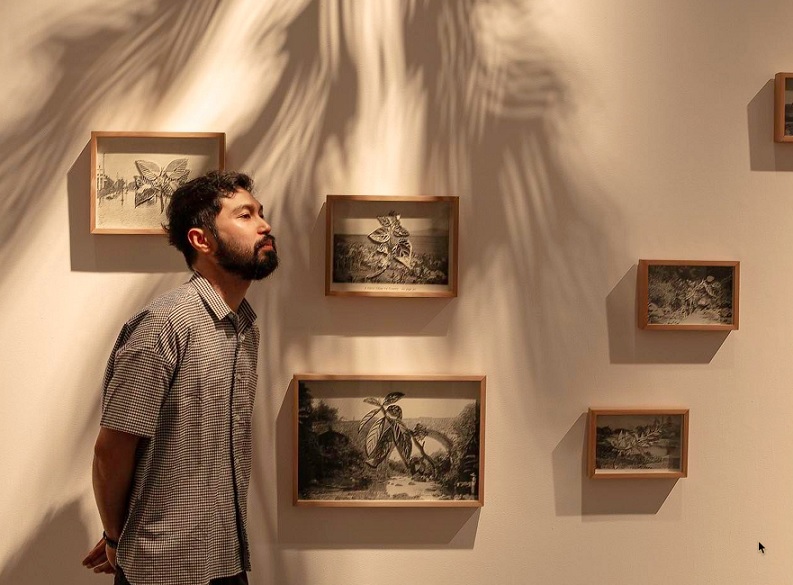

Ryan Villamael, 36, the foremost Filipino artist working on paper as sculptural medium, presents mostly paper installations in a solo exhibition, Return, My Gracious Hour at the Silverlens Galleries until February 3, 2024.
He often works on archival materials such as old books, maps or its replica, and photographs, transforming them into cut paper with intricate designs in three dimensions by meticulous cutting, blading, incising, folding, and overlapping of paper, using a razor-sharp knife.
Beyond the boundaries of geography, Villamael uses old maps to create a cartography of memories and dreams, rooted in history and experience, of pain and joy in search of a happy place.
The artist has also started experimenting with other materials such as felt, metal, mirror, wood, and sand, as well as reacquainting himself with conventional painting and sculpture.
Memories of My Town: Inspired by one of Jose Rizal’s poems with the same title, paper cutouts of flowers and plants are superimposed on 29 framed photographs of American-occupation scenes across the country.
The photographs include a Manila Bay sunset, bamboo bridge and coconut grove, a nipa house, a village in Negros Island, a carinderia serving stewed grasshoppers, and the front cover of the book, titled History and description of the picturesque Philippines, with entertaining accounts of the people and their modes of living, customs, industries, climate and present condition,1900 by Ebenezer Hannaford.
Moreover, several metal-powdered cutouts of different leaves hang over the assemblage of photographs, providing shimmering shadows of tropicality.
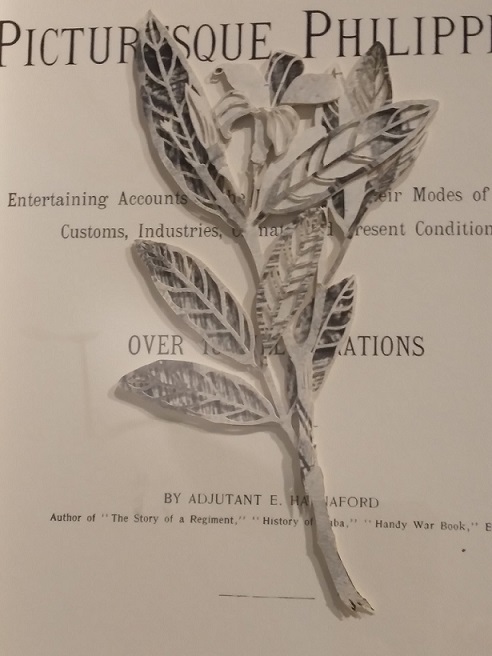

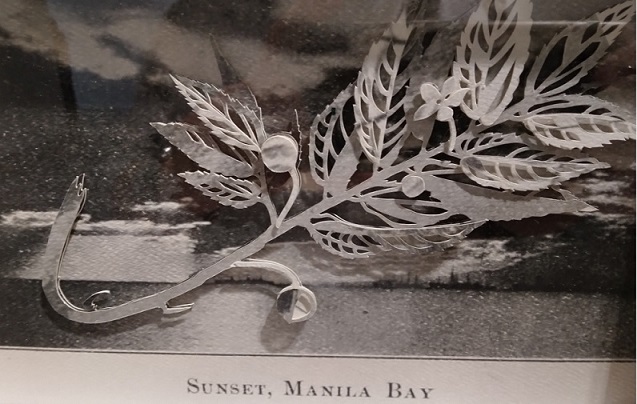

Insulae Philippinae (2023): made of archival print, watercolor, and wood sculpture of tropical fruits, all shiny black in automotive finish.
Pulô series XVI (2024): a continuation of Villamael’s Pulô series, it depicts a tropical island oasis, calm and safe, enclosed in vitrine that “safeguards a vision of an indigenous loci.”
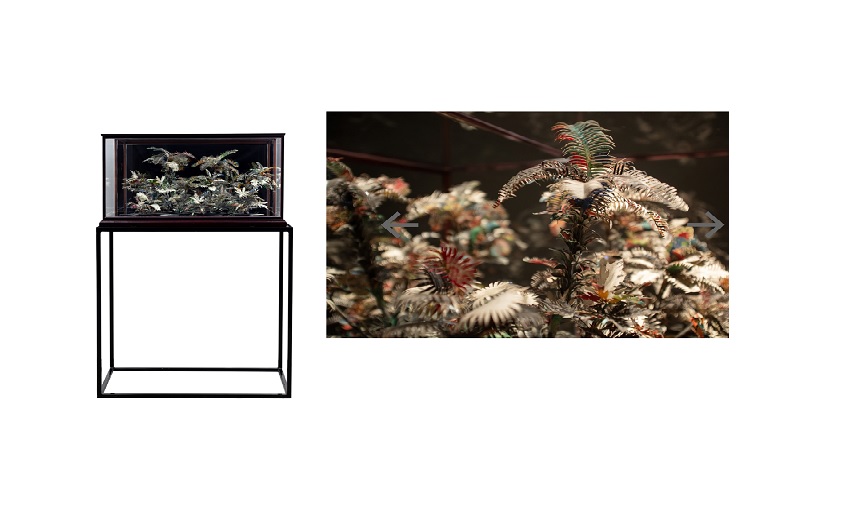

Fables (2024): Using a stainless-steel metal finish that gives a mirror-like effect, it depicts elaborate images from a beloved Filipino children’s tale, Juan Tamad. It shows crabs, spiders, carabaos, and Juan Tamad. Other symbols include the Spanish coat-of-arms, rosaries, and friars, recalling the country’s Spanish colonial rule.
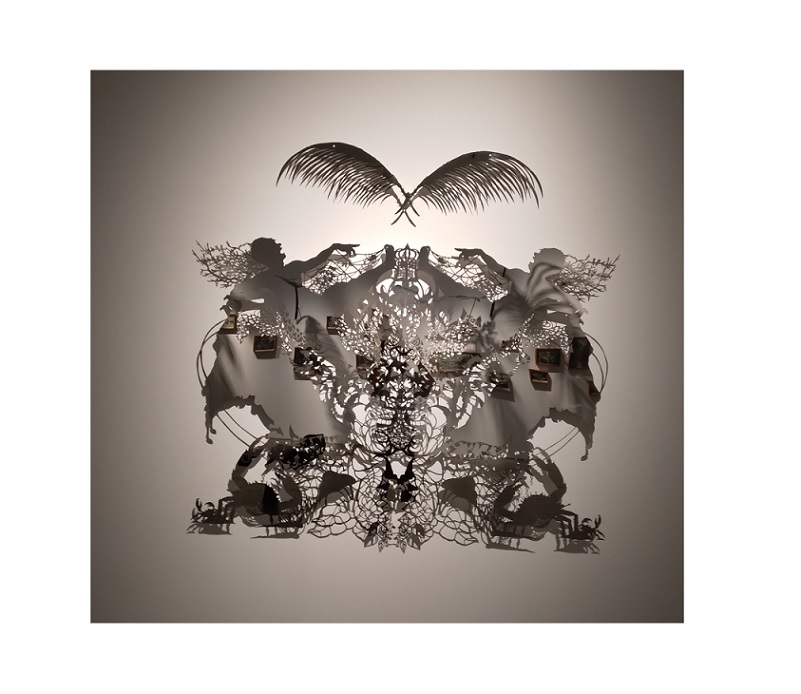

At the same time, Fables resemble a visual puzzle in its intricacy, with its three-dimensional see-through cutout, challenging viewers to see how many images one can decipher, by looking at it from different angles.
Why he chose paper as his medium
Necessity, the proverb says, is the mother of invention. In Villamael’s case, his desire to paint and sculpt was initially thwarted by expensive materials, in his early years of artmaking. He turned to paper, the only material that he could afford. As his medium of choice, he found out that in using paper, “I could say what I wanted to say and do what I wanted to do with a very simple material.”
Living and working in Los Baños, Laguna, Villamael is graduate of fine arts, major in painting (2009) from the University of the Philippines. He is a recipient of the Thirteen Artists Award, Cultural Center of the Philippines in 2021 and the Ateneo Art Awards in 2015; he was shortlisted for the said award in 2013.
As part of the 2015 Ateneo Art Awards, he was awarded three international residencies: La Trobe University Visual Arts Center in Bendigo, Australia; Artesan Gallery in Singapore; and Liverpool Hope University in Liverpool, UK.
He had participated in the 2018 Biwako Biennial in Japan and the 2016 Singapore Biennale.
Locus Amoenus
It was at the 2016 Singapore Biennial, “An Atlas of Mirrors” where Villamael unveiled the first iteration of Locus Amoenus (or “pleasant place” in Latin), a greenery installation of foliage, fronds, and cluster of leaves made of cutouts of Philippine maps.
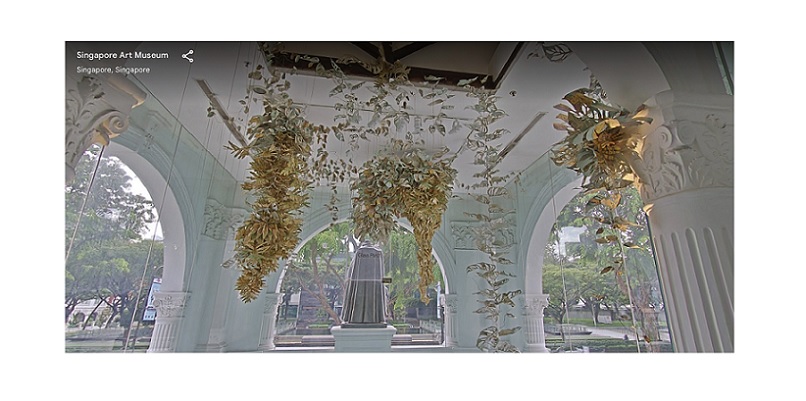

The foliage of Monstera deliciosa, an invasive tropical plant, creeps down from the ceiling, spreading, and looking to overrun its space in the Singapore Art Museum. It is the only space where a section of the original colonial building facade from 1852 is visible, as described by the 2016 Singapore Biennale guide.
The phrase Locus Amoenus also evokes an escape into an ideal place, in this instance, sited in a house of glass, a climate-controlled greenhouse.
The work “probes the imaging of the Philippines’ fraught history” under Spanish colonial rule. The installation is cut from maps with two sides, one from an archaic map, and the other from a contemporary map, a visual layering of the country’s historical realities colliding with the present.
Other iterations of Locus Amoenus have been exhibited in the Ateneo Art Gallery (2018), MAIIAM Contemporary Art Museum, Chiangmai, Thailand (2018), UP Vargas Museum (2021), and currently at the Esplanade Concourse, in time for Singapore Art Week 2024.


